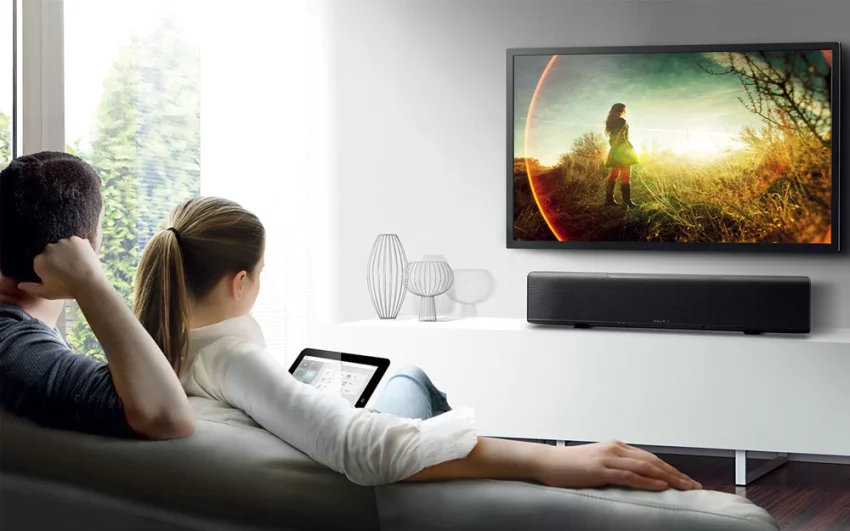In today’s modern world, LED TVs have become a staple in many households. They offer a captivating visual experience, providing crisp and vibrant images that enhance our entertainment and multimedia consumption. However, with the increasing usage of LED TVs, concerns regarding their potential impact on eye health have emerged. This article aims to shed light on why your LED TV might be hurting your eyes and provide practical solutions to prevent eye strain and discomfort.
Why Your LED TV Might Be Hurting Your Eyes
Our eyes are complex organs that are sensitive to various external stimuli. When it comes to LED TVs, several factors contribute to the potential harm they can cause to our eyes. Let’s explore some of these factors in detail:
Brightness levels and contrast settings
LED TVs are known for their high brightness levels and sharp contrast settings. While these features enhance picture quality, they can also strain our eyes. The intense brightness and abrupt changes in contrast can lead to eye fatigue and discomfort.
Blue light emissions
LED TVs emit a significant amount of blue light, which can have adverse effects on our eyes. Prolonged exposure to blue light can contribute to digital eye strain, disrupt sleep patterns, and even cause long-term damage to the retina.
Viewing distance and angle
The distance and angle at which you watch your LED TV play a crucial role in eye health. Sitting too close to the screen or viewing it from an awkward angle can strain your eyes and lead to discomfort.
Viewing duration and breaks
Binge-watching sessions have become increasingly common with the popularity of streaming services. However, prolonged periods of TV viewing without breaks can strain your eyes and cause dryness, irritation, and fatigue.
Ambient lighting conditions
The lighting conditions in your room can significantly impact your TV viewing experience. Watching TV in a dark room or excessively bright surroundings can strain your eyes and make it harder for them to adjust to the screen’s brightness.
Poor display quality and refresh rate
Low-quality LED TVs with inadequate display capabilities and low refresh rates can cause flickering and ghosting effects. These issues can lead to eye strain, headaches, and general discomfort during TV usage.
How to Prevent Eye Strain from LED TVs
Now that we understand why LED TVs might be harmful to our eyes, let’s explore some preventive measures to ensure a safer and more comfortable viewing experience:
Adjust brightness and contrast settings
Start by optimizing your LED TV’s brightness and contrast settings. Avoid excessive brightness levels and abrupt contrast changes. Opt for a balance that is comfortable for your eyes without compromising picture quality.
Use blue light filters
Invest in blue light filters or screen protectors designed specifically for LED TVs. These filters can reduce the amount of blue light emitted, minimizing the strain on your eyes. Additionally, many modern LED TVs come with built-in blue light filter options that you can enable in the settings menu.
Maintain a suitable viewing distance and angle
Position yourself at a reasonable distance from the TV screen to reduce eye strain. The ideal viewing distance is typically around 1.5 to 2.5 times the diagonal screen size. Additionally, ensure that your eyes are level with the top edge of the screen for a more comfortable viewing angle
How to Prevent Eye Strain from LED TVs
Take regular breaks
It’s crucial to give your eyes regular breaks during extended TV viewing sessions. Follow the 20-20-20 rule: Every 20 minutes, take a 20-second break and focus on something 20 feet away. This practice helps relax your eye muscles and reduce eye strain.
Optimize your room lighting
Create a comfortable viewing environment by adjusting the lighting in your room. Avoid excessive brightness or darkness. Opt for ambient lighting that is gentle on the eyes and minimizes screen glare. Consider using curtains or blinds to control natural light during the day.
Use proper seating and posture
Choose ergonomic seating that provides adequate support for your back and neck. Maintain a correct posture while watching TV to prevent unnecessary strain on your eyes and body. Avoid slouching or sitting too close to the screen.
LED TV Prices in Pakistan
LED TVs are available in various price ranges in the Pakistani market. Here’s a breakdown of different options you can consider:
Affordable LED TVs
If you’re on a tight budget, there are several affordable LED TVs available in Pakistan. These entry-level options provide decent picture quality and basic features at an affordable price point. They are suitable for casual viewing and smaller spaces.
Smart LED TVs
Smart LED TVs offer additional features and connectivity options. They come with built-in Wi-Fi, allowing you to access popular streaming platforms and online content directly from your TV. These TVs provide a more interactive and convenient viewing experience.
Android LED TVs
Android LED TVs run on the Android operating system, providing access to a wide range of apps and services through the Google Play Store. They offer seamless integration with your other smart devices and allow for personalized customization options.
FAQs about LED TV and Eye Health
Can LED TVs cause permanent damage to my eyes?
No, LED TVs alone do not cause permanent eye damage. However, prolonged and excessive exposure to the bright light and blue light emitted by LED TVs can lead to eye strain, fatigue, and discomfort. It’s essential to take preventive measures to protect your eyes.
Do all LED TVs emit the same amount of blue light?
No, the amount of blue light emitted by LED TVs can vary depending on the manufacturer and model. Some modern LED TVs come with built-in blue light filters or settings that allow you to adjust the blue light emission levels.
Is it necessary to wear blue light-blocking glasses while watching TV?
Wearing blue light-blocking glasses can be beneficial, especially if you spend significant time in front of screens. These glasses help reduce the amount of blue light reaching your eyes, minimizing eye strain and potential sleep disturbances.
How far should I sit from my LED TV for optimal viewing?
The ideal viewing distance depends on the size of your TV screen. As a general rule, sit at a distance that is 1.5 to 2.5 times the diagonal screen size. For example, if you have a 50-inch TV, the optimal viewing distance would be around 6 to 10 feet.
Can adjusting the TV’s picture settings improve eye comfort?
Yes, adjusting the brightness, contrast, and color temperature settings of your LED TV can significantly impact eye comfort. Experiment with different settings until you find a balance that provides a comfortable viewing experience without straining your eyes.
Are there any special considerations for children’s TV viewing?
Yes, children are more susceptible to eye strain and digital eye fatigue. Limit their screen time, ensure proper seating distance, and encourage regular breaks. Consider using parental control features to regulate their TV usage.
Conclusion:
As we immerse ourselves in the world of LED TVs, it’s crucial to prioritize our eye health and take necessary precautions to prevent eye strain and discomfort. While LED TVs offer stunning visuals and immersive experiences, they also come with potential risks to our eyes. By adjusting settings, maintaining proper viewing habits, and implementing preventive measures, we can enjoy our LED TVs without compromising our visual well-being.
Remember to optimize brightness and contrast settings, use blue light filters, maintain a suitable viewing distance and angle, take regular breaks, and create a comfortable room lighting environment. Additionally, consider the different options available in the market, such as affordable LED TVs, smart LED TVs, and android LED TVs, to cater to your specific needs and preferences.
When it comes to LED TV prices in Pakistan, you can find a wide range of options to fit various budgets and requirements. Whether you’re looking for an entry-level LED TV or a feature-rich smart TV, exploring the market and comparing prices can help you make an informed decision.
In conclusion, while LED TVs provide us with incredible entertainment and multimedia experiences, it’s essential to prioritize our eye health. By following the preventive measures and considering the tips mentioned in this article, you can enjoy your LED TV without the risk of eye strain and discomfort.
Remember to adjust settings, take breaks, maintain a suitable viewing distance, optimize room lighting, and consider investing in blue light filters or screen protectors. By taking these steps, you can protect your eyes and ensure a more comfortable and safer LED TV viewing experience.

